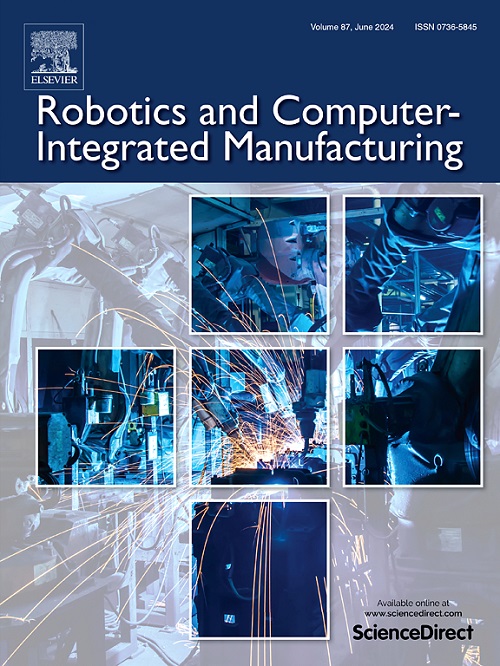DSF-Net:用于航天器热控涂层缺陷检测的双空间频率动态网络
IF 11.4
1区 计算机科学
Q1 COMPUTER SCIENCE, INTERDISCIPLINARY APPLICATIONS
引用次数: 0
摘要
热控涂层是航天器等高端设备的关键功能材料,直接影响其运行稳定性和使用寿命。在制造过程中,工艺参数的波动和材料的污染很容易造成各种缺陷,包括晶点、瑕疵和皱纹。传统的检测方法难以满足工业实时和高精度的要求。现有用于航天器热控涂层检测的深度学习算法面临三个主要挑战:缺乏标准化的工业数据集,复杂的工业照明条件干扰特征提取,以及多个缺陷共存时识别精度下降。为了解决这些问题,本文首先建立了工业级热控涂层缺陷数据集(ITCCD),涵盖了包括晶点和瑕疵在内的六种典型缺陷类型。通过频域分析,揭示了不同缺陷类型的频谱特征分布规律,建立了缺陷特征与频域表示的关系。在此基础上,本文设计了一个双空间频率动态网络(DSF-Net),并进行了两个关键技术创新:(1)采用级联双级结构的动态初始混频器主干网,并采用自适应权重分配机制;(2)频率感知特征融合模块,通过可学习的频率响应函数实现频域映射和解耦。在ITCCD数据集上的实验结果表明,DSF-Net在mAP50上达到了83.0%,比最佳比较模型高出7.4%,同时减少了23.9%的参数。值得注意的是,对具有挑战性的缺陷类型(如晶体点和瑕疵)的检测精度分别提高了22.7%和13.3%。本研究构建了标准化数据集,通过频域分析框架提高了复杂光照条件下的缺陷检测精度。提出的频域特征解耦方法为材料表面缺陷检测提供了一种新的方法。DSF-Net在保持高精度的同时实现端到端检测,为热控涂料的在线质量控制提供了有效的技术解决方案。本文章由计算机程序翻译,如有差异,请以英文原文为准。
DSF-Net: Dual-Space frequency dynamic network for spacecraft thermal control coating defect detection
Thermal control coatings are critical functional materials for high-end equipment such as spacecraft, directly affecting their operational stability and service life. During manufacturing, process parameter fluctuations and material contamination can easily cause various defects including crystal points, blemishes, and wrinkles. Traditional detection methods struggle to meet industrial real-time and high-precision requirements. Existing deep learning algorithms for spacecraft thermal control coating detection face three major challenges: lack of standardized industrial datasets, complex industrial lighting conditions interfering with feature extraction, and decreased recognition accuracy when multiple defects coexist. To address these issues, this paper first establishes an industrial-grade thermal control coating defect dataset (ITCCD), covering six typical defect types including crystal points and blemishes. Through frequency domain analysis, this paper reveals the spectral feature distribution patterns of different defect types and establishes the relationship between defect characteristics and frequency domain representation. Based on these findings, this paper designs a Dual-Space Frequency Dynamic Network (DSF-Net) with two key technical innovations: (1) a Dynamic Inception Mixer backbone network using cascaded dual-stage architecture with adaptive weight allocation mechanism; (2) a frequency-aware feature fusion module that implements frequency domain mapping and decoupling through learnable frequency response functions. Experimental results on the ITCCD dataset show that DSF-Net achieves 83.0 % on the mAP50, outperforming the best comparison model by 7.4 %, while reducing parameters by 23.9 %. Notably, detection accuracy for challenging defect types such as crystal points and blemishes improved by 22.7 % and 13.3 % respectively. This research constructs a standardized dataset and improves defect detection accuracy under complex lighting conditions through a frequency domain analysis framework. The proposed frequency domain feature decoupling method provides a new approach for material surface defect detection. DSF-Net achieves end-to-end detection while maintaining high accuracy, providing an effective technical solution for online quality control of thermal control coatings.
求助全文
通过发布文献求助,成功后即可免费获取论文全文。
去求助
来源期刊
CiteScore
24.10
自引率
13.50%
发文量
160
审稿时长
50 days
期刊介绍:
The journal, Robotics and Computer-Integrated Manufacturing, focuses on sharing research applications that contribute to the development of new or enhanced robotics, manufacturing technologies, and innovative manufacturing strategies that are relevant to industry. Papers that combine theory and experimental validation are preferred, while review papers on current robotics and manufacturing issues are also considered. However, papers on traditional machining processes, modeling and simulation, supply chain management, and resource optimization are generally not within the scope of the journal, as there are more appropriate journals for these topics. Similarly, papers that are overly theoretical or mathematical will be directed to other suitable journals. The journal welcomes original papers in areas such as industrial robotics, human-robot collaboration in manufacturing, cloud-based manufacturing, cyber-physical production systems, big data analytics in manufacturing, smart mechatronics, machine learning, adaptive and sustainable manufacturing, and other fields involving unique manufacturing technologies.

 求助内容:
求助内容: 应助结果提醒方式:
应助结果提醒方式:


